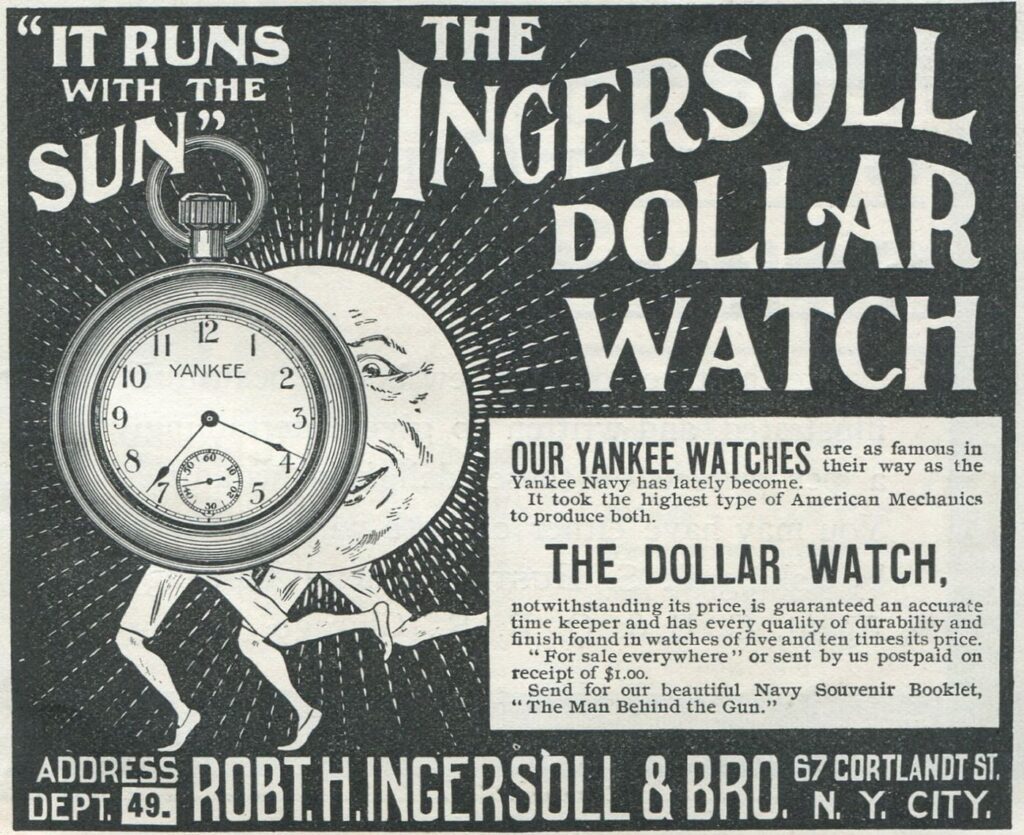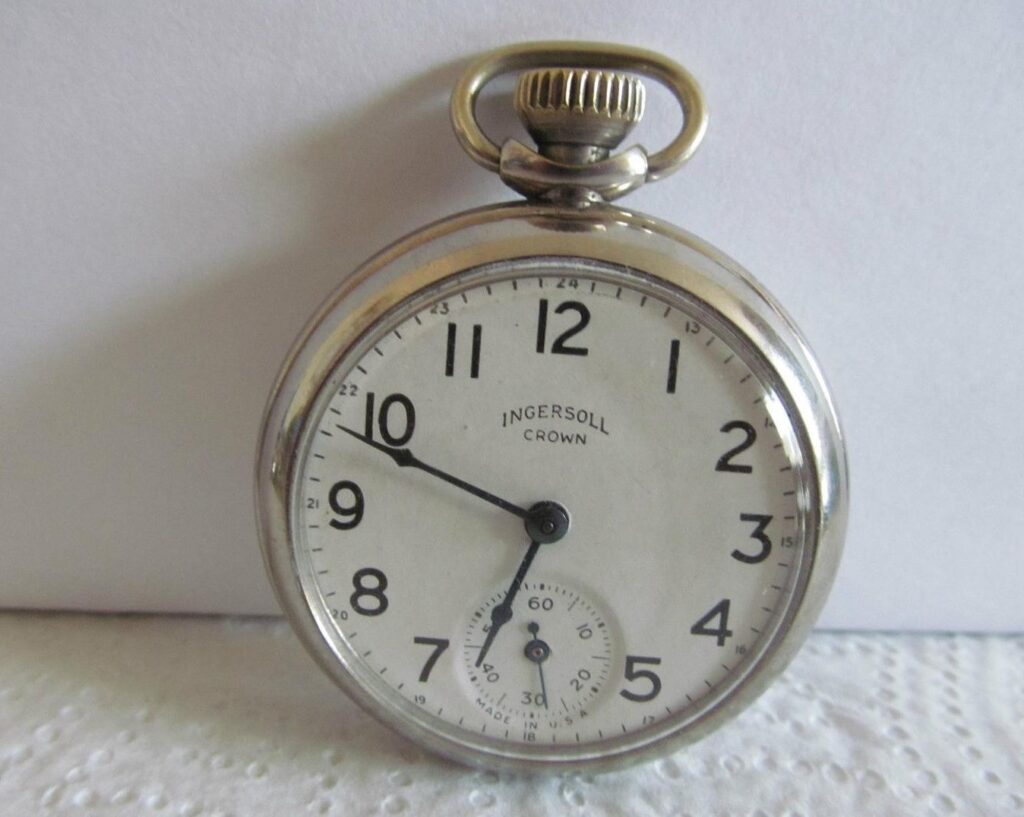The Watch That Made The Dollar Famous
When you think of what a United States Dollar can buy for you, not a whole lot comes to mind. A reliable watch is certainly not even a consideration. Pocket watches in the late 1870s were an elite status symbol and were expensive because there was not an efficient way to manufacture them. Traditional escapements have two faces that need to be adjusted to correct angles for the watch to keep time. This takes a considerable amount of effort and time to correctly do.
Ingersoll started in 1881 as a mail order business in New York City and sold low-cost items such as rubber stamps. They recognized an opportunity in the watch market and sought a way to effectively produce watches at a low cost. Waterbury Clock Company had a Jumbo pocket watch in stores in New York. It was a less expensive alternative to the high-end European clocks that were on the market. Ingersoll contacted the Waterbury Clock Company to buy their watches.
They ended up creating a separate agency deal with Waterbury Clock Company. This meant that Waterbury would supply the watches, and Ingersoll would sell the watches. In 1892 they placed an order for 10,000 watches from Waterbury at a cost of 85-cents each. Every Ingersoll watch was initially handcrafted. However, due to the involvement of Henry Ford, they succeeded in creating an automated production line for wrist and pocket watches. The first watch that Ingersoll sold was the “Universal.” They started out by selling the watch to dealers and then eventually put it into their mail order catalog. The Universal watch was a small, spring-driven clock about three inches in diameter and one inch thick. The crown was purely cosmetic. The clock was wound by a captive key that hinged out, and you could set the time with a main wheel.

In 1896 The Ingersoll Company then introduced the “Yankee.” It was “The Watch that Made the Dollar Famous.” The price was set at a dollar to allow the average working man to buy the watch for a day’s wages—which was $31.10 in today’s money. It was cheaply mass-produced from stamped parts and devoid of jewels. Instead of jewels they used the pin-lever escapement to reduce the production cost. Even though it was cheap, it was soon recognized for its quality and precision. The ‘dollar watch’ was so popular over one million were sold. By 1899 the Waterbury Clock Company was producing 8,000 watches per day. By 1910, Waterbury was producing 3.5 million ‘dollar watches’ per year for Ingersoll. Ingersoll Watch Company maintained an efficient system of distribution and uniform pricing at all retail outlets to effectively boost their numbers. Over those twenty years, nearly forty million ‘dollar watches’ were sold.

In 1904 Ingersoll expanded their horizons and launched a store in London, England. In London they introduced the crown pocket watch. It sold for 5 shillings which was just around $1. The watches were initially made from imported parts and later made entirely in the London factory. They expanded even more by buying the Trenton Watch Company in 1908. And in 1914 they bought the New England Watch Company for $76,000. By 1916, Ingersoll was producing 16,000 watches per day in ten models.
Ingersoll went bankrupt during the recession that followed World War I. It was purchased by the Waterbury Clock Company (now the Timex Group USA) shortly after for 1.5 million dollars. Today they are owned by Zeon Watches, a British subsidiary of the Chinese company, Herald Group. They are still distributing Ingersoll watches in more than 50 countries around the world. The Ingersoll Watch company will forever be identified as the company with “The Watch that Made the Dollar Famous” For collectors, the Dollar Pocket Watch is still a highly collectible item and is recognized for its crucial role in the development of timepieces.
Times Ticking has been in operation for more than 30 years, since 1982. We have performed watch repair for customers both locally and internationally. If it Ticks! We KNOW it! Our team of watch repair technicians have a combined experience in watchmaking of over 120 years.

